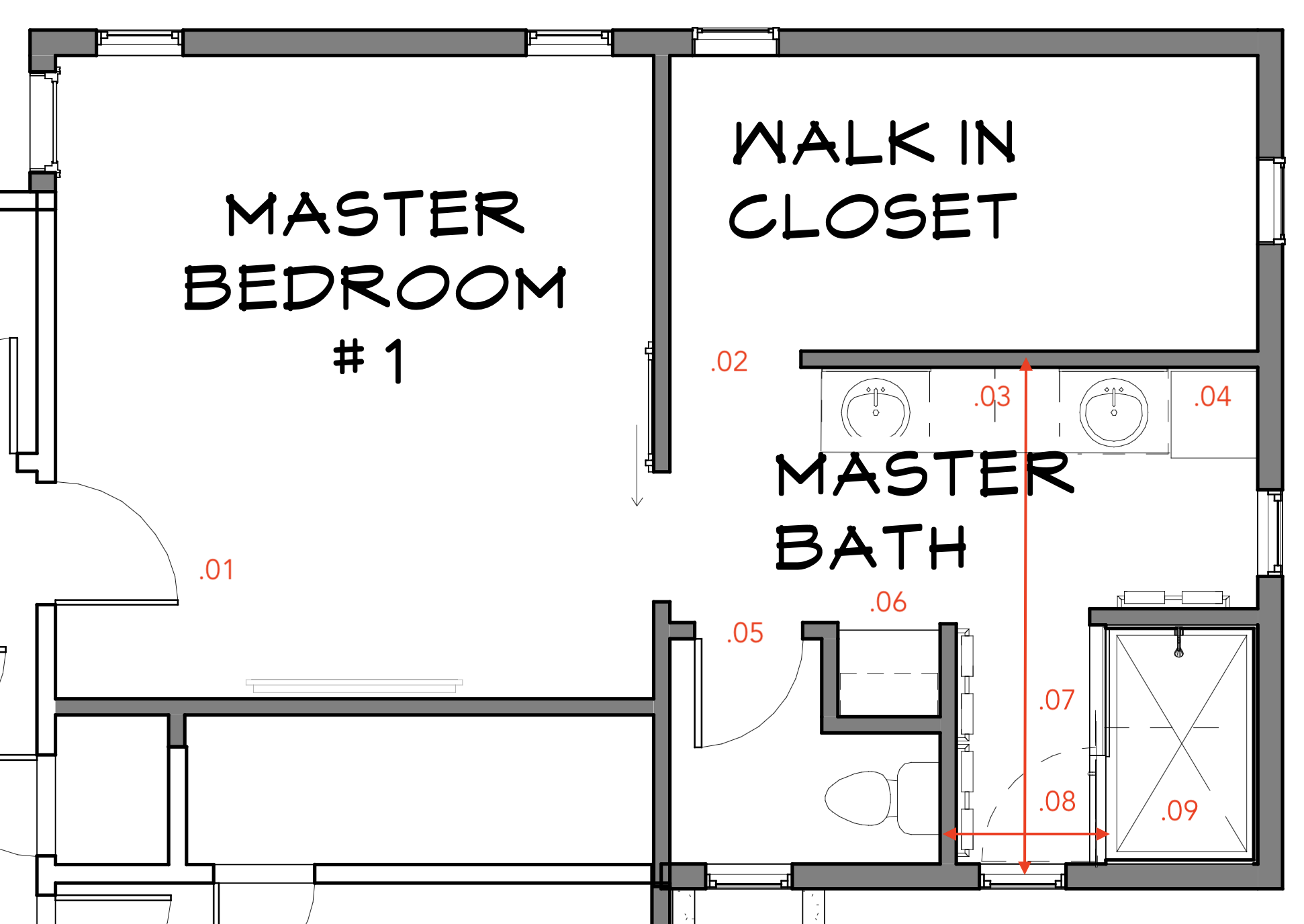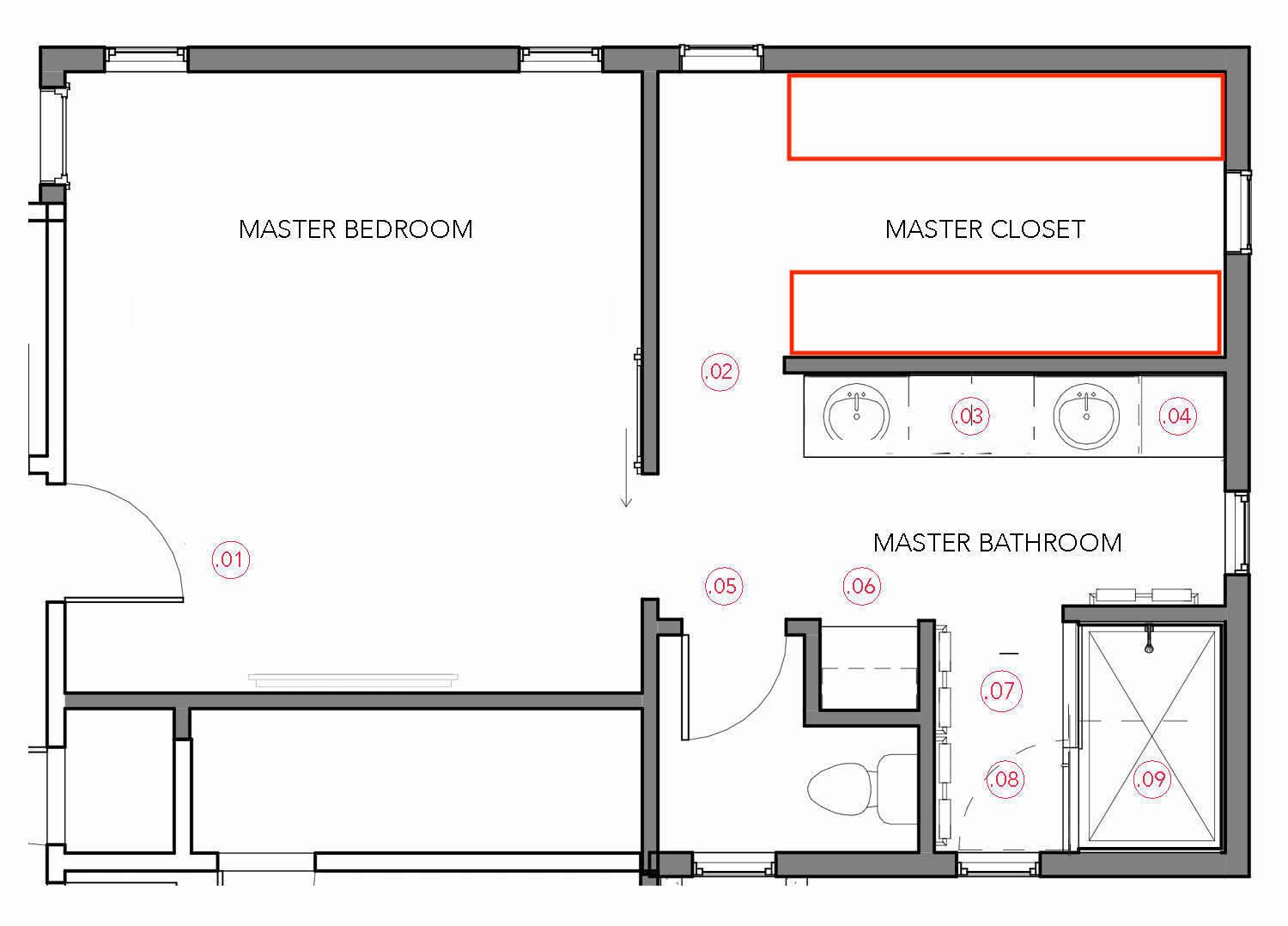Walk-in Closet Design Considerations: Walk In Closet And Bathroom Floor Plan

Yo, a walk-in closet is like the ultimate dream for anyone who loves clothes and wants to keep their space organized. It’s basically your own personal fashion haven, and it can totally level up your bedroom game.
Factors to Consider When Designing a Walk-in Closet
When you’re planning your walk-in closet, there are a few things you gotta think about to make sure it’s the perfect fit for your style and needs.
- Size: The size of your walk-in closet will determine how much stuff you can fit in there. You need to consider how much space you have available and how much you want to dedicate to your closet. A larger closet will give you more flexibility with layouts and storage options.
- Layout: The layout of your walk-in closet is super important. It’s all about making the most of your space. You can go for a traditional layout with shelves and hanging rods, or get creative with an island in the middle for extra storage.
- Features: Think about the features you want in your walk-in closet. Do you want a dressing area with a mirror and seating? Maybe a built-in jewelry organizer or a shoe rack? The sky’s the limit when it comes to features.
Bathroom Floor Plan Essentials

A well-designed bathroom floor plan is crucial for creating a functional and comfortable space. It’s not just about aesthetics; it’s about maximizing usability and ensuring your bathroom flows smoothly. Think of it like a well-choreographed dance – every move should be seamless and efficient.
Key Elements of a Bathroom Floor Plan
The key elements of a bathroom floor plan are the shower, toilet, sink, and vanity. These elements should be arranged in a way that maximizes space and allows for easy movement. Imagine a well-organized stage where each performer has their designated space and can move freely without bumping into each other.
Bathroom Layouts
There are many different bathroom layouts to consider, each with its own advantages and disadvantages. Here are a few popular examples:
Single-Sink Layout
This is the most common bathroom layout, and it’s perfect for smaller spaces. The sink, toilet, and shower are all located on one wall, with the sink typically placed in the center. It’s like a classic three-piece band – simple, efficient, and effective.
Double-Sink Layout
A double-sink layout is ideal for larger bathrooms or families. Think of it like a two-lane highway – it allows for more traffic flow, in this case, more people getting ready in the morning without feeling cramped.
Corner Layout
A corner layout is a great option for maximizing space in a small bathroom. The shower, toilet, and sink are all placed in the corners of the room, creating a more open and spacious feel. It’s like a puzzle where each piece fits perfectly, leaving no wasted space.
Tips for Optimizing Bathroom Space
There are several tips for optimizing bathroom space, including:
Using a Shower Curtain or Glass Door
A shower curtain or glass door can help to create a sense of separation between the shower and the rest of the bathroom, making the space feel larger. Think of it as a stage curtain – it creates a distinct area while still allowing light to pass through.
Incorporating Storage Solutions
Storage solutions are essential for keeping a bathroom organized and clutter-free. Think of a well-organized backstage – everything has its place, and it’s easily accessible when needed.
Selecting the Right Fixtures
The right fixtures can make a big difference in the overall look and feel of a bathroom. Think of it as choosing the right props for a play – they enhance the aesthetic and functionality of the space.
Integrating Walk-in Closet and Bathroom

Imagine waking up, stepping into your luxurious bathroom, and having your entire wardrobe at your fingertips. Sounds pretty awesome, right? Integrating a walk-in closet with your bathroom creates a space that’s not only convenient but also incredibly stylish and efficient. This trend is gaining popularity because it offers a unique blend of functionality and luxury, making your daily routine a breeze.
Design Approaches for Integrating a Walk-in Closet and Bathroom
There are a few different ways to seamlessly blend your walk-in closet and bathroom, each with its own advantages.
- Creating a Shared Wall: This is a classic approach that creates a sense of separation while still allowing for a flow between the two spaces. The shared wall can house storage units, shelves, or even a vanity on the bathroom side, making the most of the available space.
- Pocket Door: A pocket door is a great option for creating a more open feel when you want to access both spaces. It slides discreetly into the wall when open, maximizing the usable area and minimizing visual clutter.
- Sliding Door: Similar to a pocket door, a sliding door can create a more open and airy feel. It’s a stylish option that can be customized with various materials and designs to complement your overall aesthetic.
Floor Plan Examples for Combining Walk-in Closet and Bathroom, Walk in closet and bathroom floor plan
Let’s look at some examples of how you can combine a walk-in closet and bathroom effectively:
- L-Shaped Layout: This layout is ideal for smaller spaces. The walk-in closet is placed along one side of the bathroom, creating an L-shaped configuration. This maximizes space while offering a clear separation between the two areas.
- Open Concept: In larger spaces, an open concept layout can create a luxurious and spacious feel. This involves removing the wall between the walk-in closet and bathroom, creating a seamless flow and maximizing natural light.
- Walk-through Closet: This layout allows you to access the bathroom through your walk-in closet. It’s a convenient option for smaller spaces, especially when you want to create a more private dressing area.
Tips for Creating a Seamless Transition
To ensure a smooth transition between your walk-in closet and bathroom, consider these tips:
- Lighting: Choose a cohesive lighting scheme that complements both spaces. Use a combination of natural and artificial light to create a bright and inviting atmosphere.
- Flooring: Use consistent flooring throughout the space, or choose complementary materials that create a sense of flow. Consider using a durable material like tile or hardwood that can withstand the moisture levels in a bathroom.
- Décor: Use a consistent color palette and style elements to tie the walk-in closet and bathroom together. Incorporate mirrors and artwork to create a sense of depth and interest.
